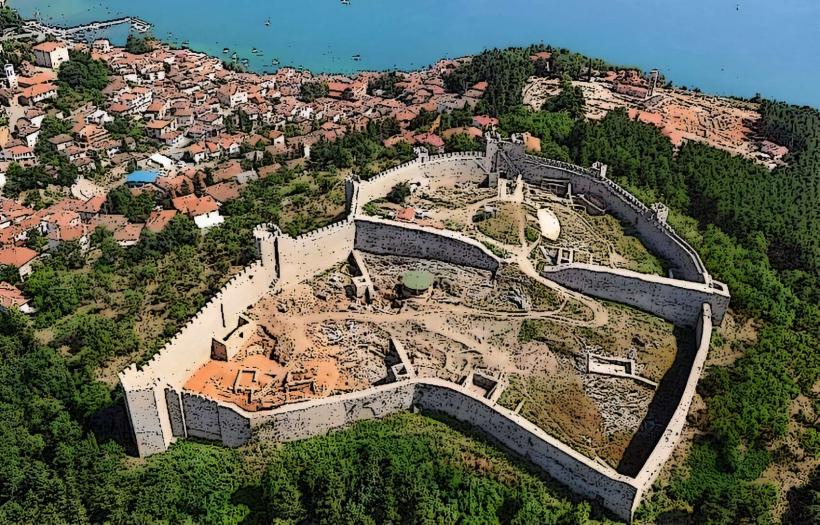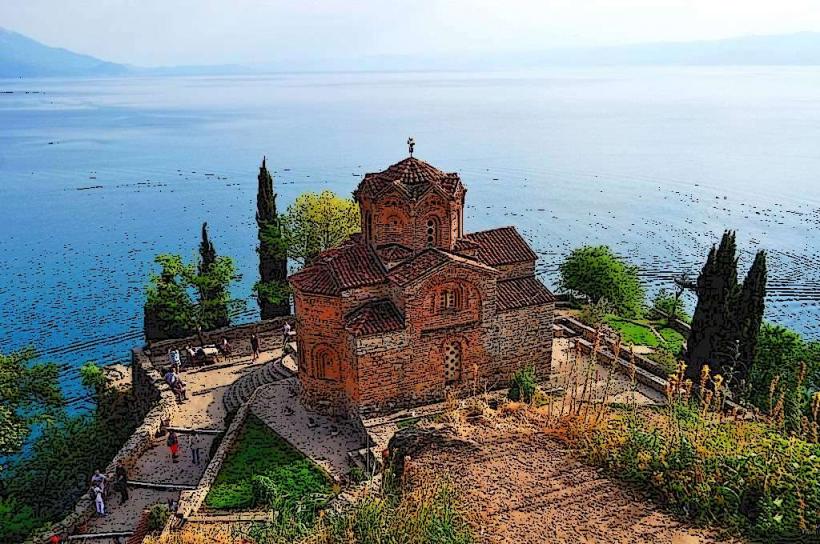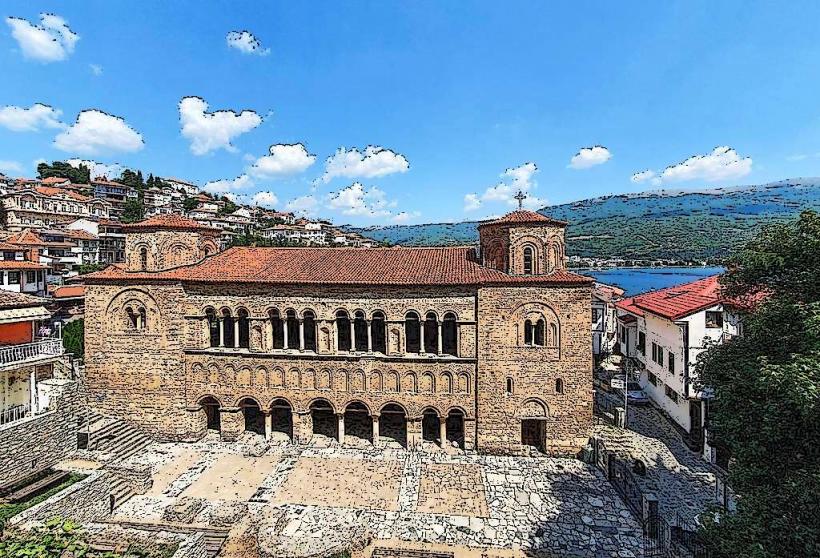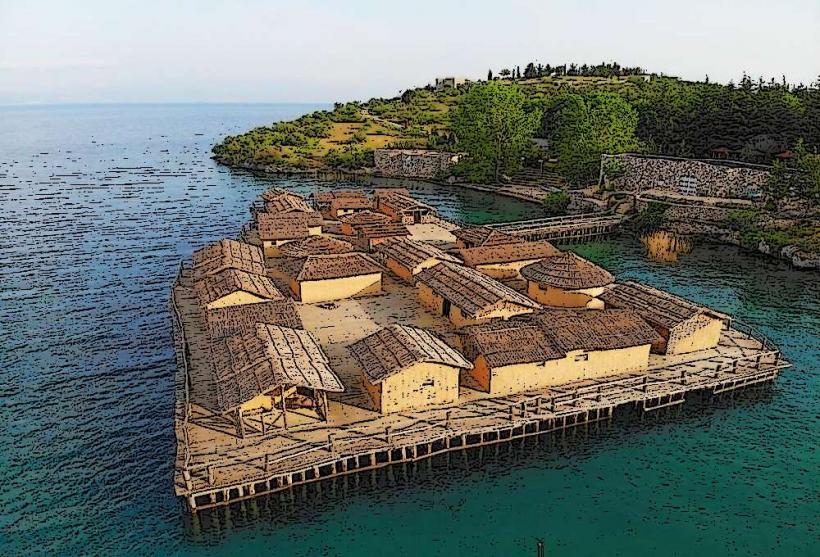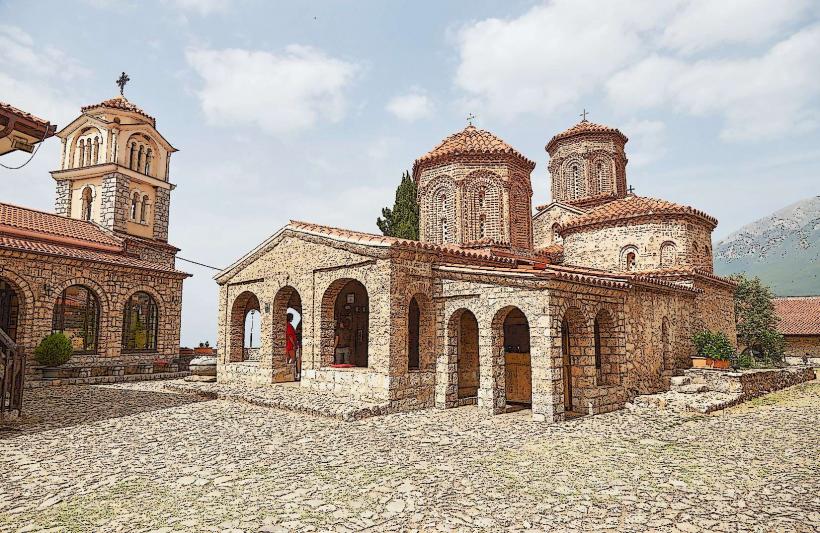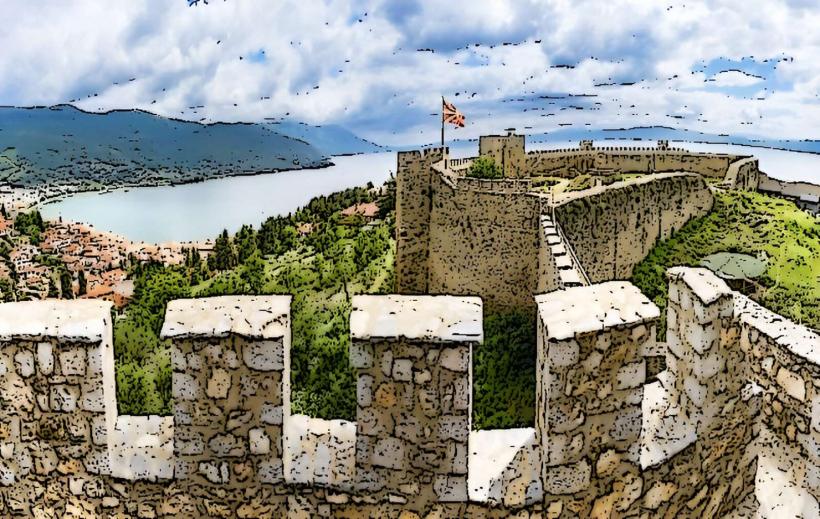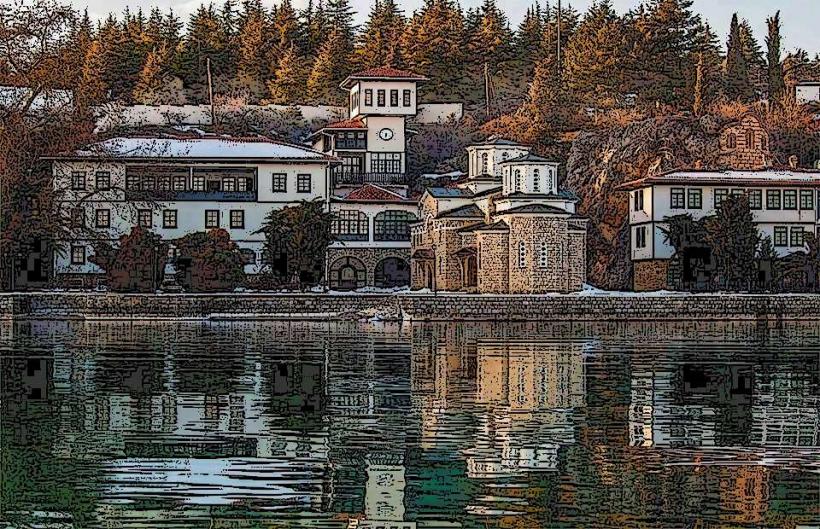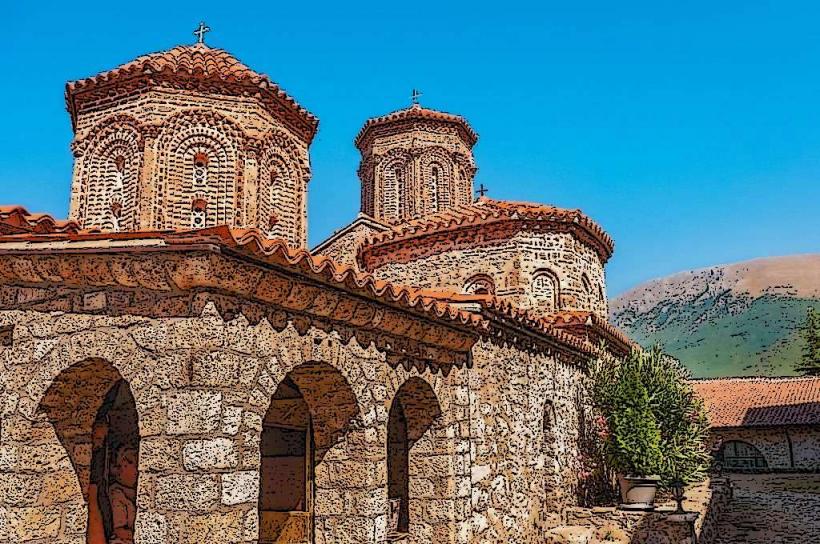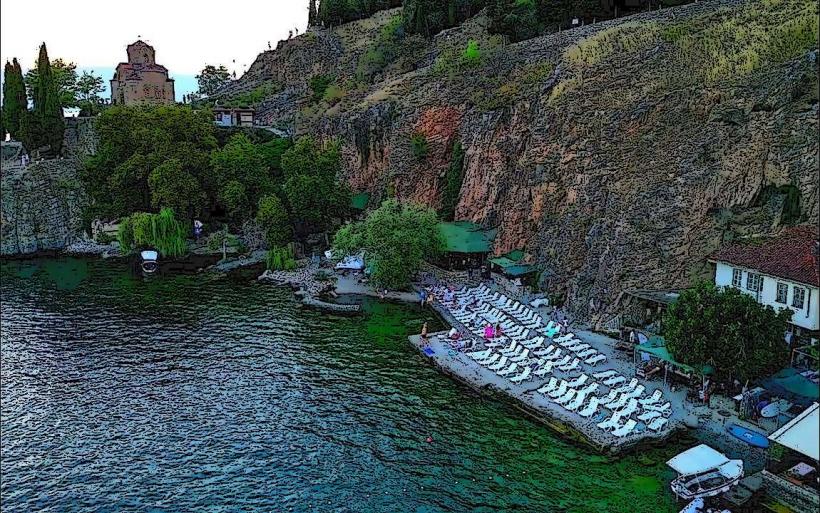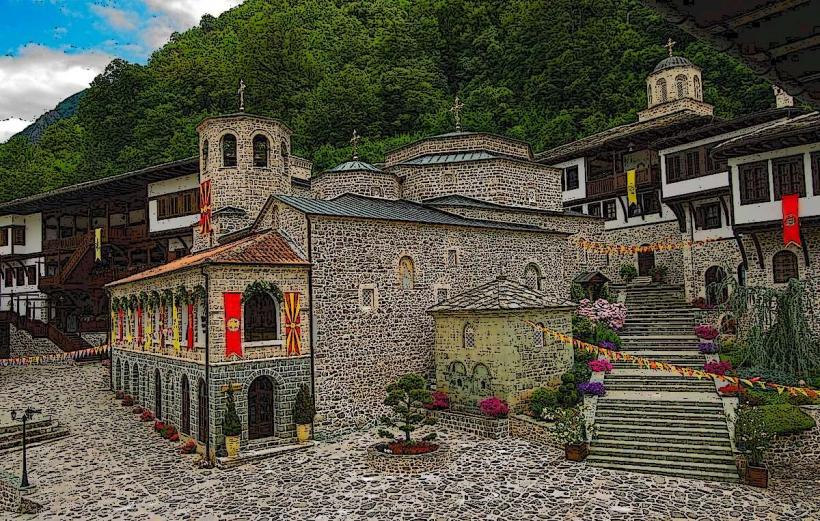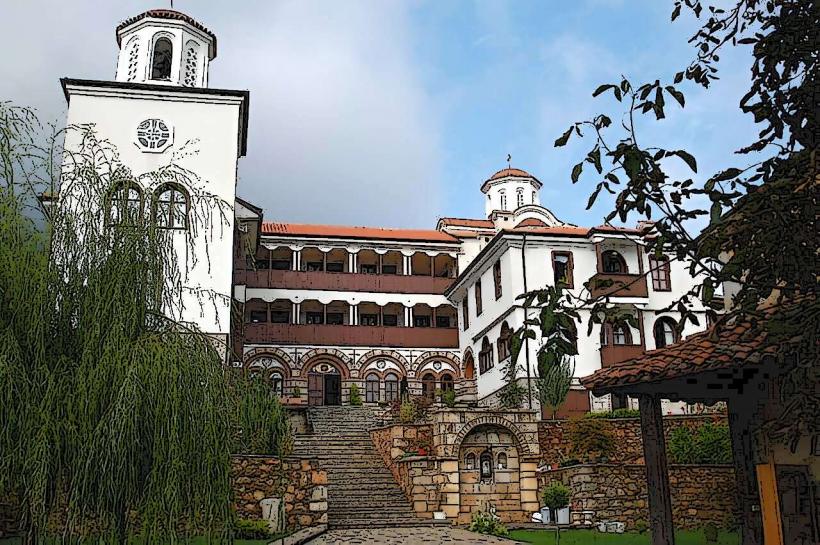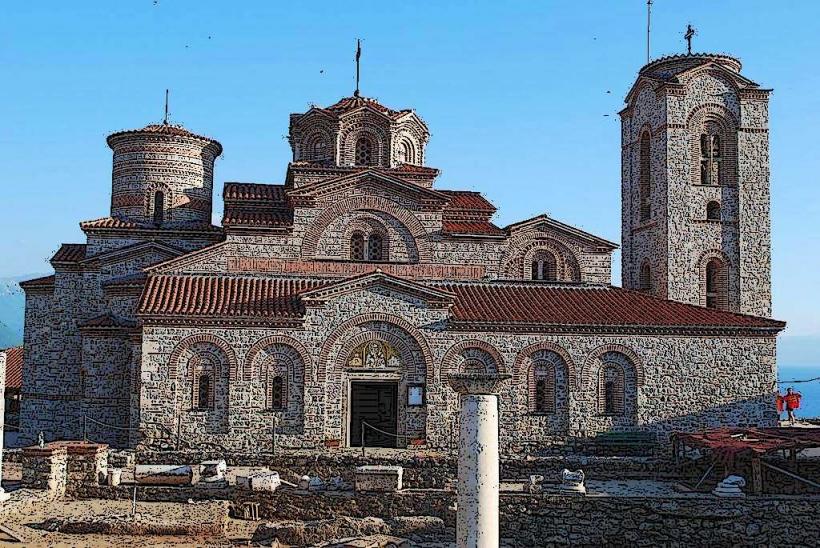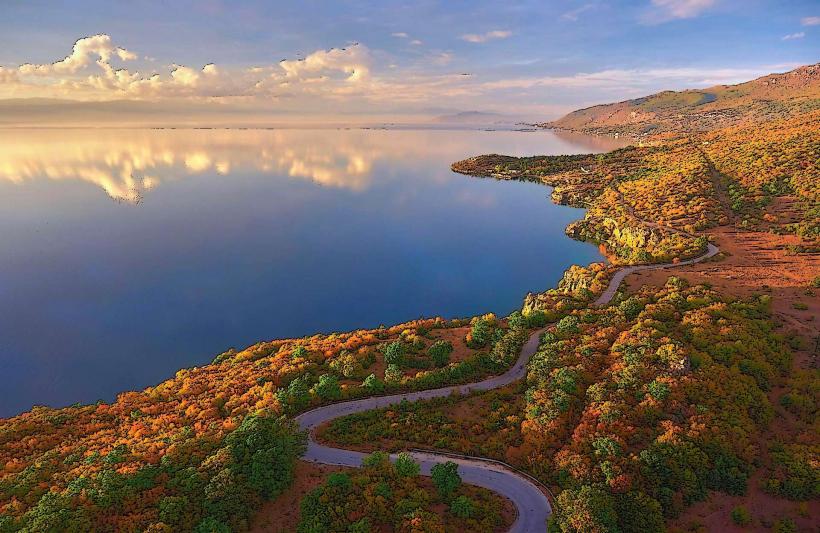Information
Landmark: Lake OhridCity: Ohrid
Country: North Macedonia
Continent: Europe
Lake Ohrid in North Macedonia is a world-renowned natural and cultural landmark, famous for its ancient origins, rich biodiversity, and historic significance. Located on the border between North Macedonia and Albania, the lake is one of the oldest and deepest lakes in Europe and holds both natural and cultural value, making it a key site of global importance.
Overview of Lake Ohrid (North Macedonia)
- Location: Lake Ohrid lies in the southwestern part of North Macedonia, with the town of Ohrid situated on its western shore. The lake extends into Albania as well, with the town of Pogradec located on the opposite side of the lake.
- Size: The lake spans approximately 358 square kilometers and has a maximum depth of 288 meters (945 feet), making it the deepest lake in the Balkans and one of the deepest in Europe.
- Age: Lake Ohrid is estimated to be 4 million years old, which makes it one of the oldest lakes in the world. Its age and geographical isolation have allowed it to develop a unique ecosystem with many species that are found nowhere else.
Ecological Significance
Endemic Species:
- Lake Ohrid is renowned for its biodiversity and hosts a wide range of endemic species of plants, fish, and invertebrates, many of which are unique to the lake due to its ancient and isolated nature.
- Notable endemic species include the Ohrid trout (Salmo ohridanus), which is native to the lake, and various species of snails and fish.
- The lake’s clear waters and relatively pristine environment make it an important site for biological research and conservation.
Conservation Efforts:
- The lake is part of the Ohrid-Prespa Transboundary Biosphere Reserve, aimed at protecting its fragile ecosystem. It has been recognized as a UNESCO World Heritage Site since 1979, reflecting its ecological and cultural value.
- There have been efforts to tackle pollution, which has become a concern due to agricultural runoff, industrial pollution, and overfishing. Ongoing conservation projects aim to preserve the biodiversity and water quality of the lake.
Cultural and Historical Significance
Historical Context:
- Lake Ohrid has been an important center of civilization for millennia. The ancient city of Lychnid (modern-day Ohrid) was established on the shores of the lake, and the area has been inhabited since prehistoric times.
- The lake was a key location in the spread of Christianity in the region, with Ohrid becoming a prominent center for Orthodox Christianity and Slavic culture in the Middle Ages. The region is sometimes referred to as the "Jerusalem of the Balkans" due to its significance in the early spread of Slavic Christianity.
Ohrid’s Religious Importance:
- Ohrid has numerous historic churches, monasteries, and icons, many dating back to the Byzantine period, and remains an important religious center in North Macedonia.
- The Ohrid Literary School (9th-12th centuries), founded by Saint Clement of Ohrid, was a major center for the spread of Slavic literacy and the Cyrillic alphabet.
- The Church of St. John at Kaneo, Church of St. Clement of Ohrid, and the Monastery of St. Naum are just a few of the historically significant religious sites around the lake.
UNESCO World Heritage Site:
- In recognition of its exceptional historical and natural significance, Lake Ohrid and the city of Ohrid were designated as a UNESCO World Heritage Site in 1979. The site is recognized for its exceptional cultural and natural heritage, including the unique blend of ancient architecture, art, and the rich ecosystem that the lake supports.
Tourism and Recreation
Tourist Attractions:
- Ohrid is one of the most popular destinations in North Macedonia, and its old town is famous for its medieval architecture, including its churches, fortresses, and cobblestone streets.
- The lakefront promenade in Ohrid and the beaches along the shore offer great opportunities for relaxation and recreation.
- The lake is also home to several islands, some of which are inhabited or contain monasteries like St. Naum Monastery, located on the lake’s southeastern shore.
Lake Activities:
- Boating: Visitors can enjoy boat tours on Lake Ohrid, which offer scenic views of the surrounding landscapes and access to isolated beaches and monasteries. Private boat rentals and cruises are popular activities.
- Swimming: The lake’s clear waters are ideal for swimming, and its beaches, such as Trpejca and Gradishte, attract visitors during the warmer months.
- Fishing: Lake Ohrid is famous for its Ohrid trout and other species, and fishing is a popular activity for both locals and tourists.
- Hiking: The surrounding mountainous terrain offers excellent opportunities for hiking, with trails leading to panoramic viewpoints overlooking the lake.
Cultural Heritage Tourism:
- In addition to its natural beauty, Ohrid is known for its rich cultural heritage. The Ohrid Summer Festival is an annual event that celebrates the city’s vibrant music, art, and theater traditions.
- The Cyrillic Museum, Museum of the City of Ohrid, and several churches and monasteries offer insights into the city’s religious, literary, and historical significance.
Environmental Challenges and Preservation
Pollution:
- The increasing popularity of tourism and urban development along the shores of the lake have led to concerns about pollution and overdevelopment. Wastewater, plastic pollution, and industrial contamination have been identified as threats to the lake's delicate ecosystem.
- Efforts to reduce pollution include improving wastewater treatment, enforcing regulations to limit the use of harmful chemicals, and promoting sustainable tourism practices.
Invasive Species:
- The introduction of non-native species, such as certain fish and aquatic plants, has threatened the biodiversity of the lake. Conservation efforts aim to limit the spread of these invasive species and protect the lake's endemic flora and fauna.
Conclusion
Lake Ohrid is an exceptional natural and cultural treasure, with its unique biodiversity, historic significance, and stunning beauty. The lake and its surroundings represent a harmonious blend of natural and cultural heritage that has shaped the region for millennia. Whether you are interested in exploring its ancient churches, relaxing by its clear waters, or learning about its ecological and historical importance, Lake Ohrid is a must-see destination that offers a timeless experience. Efforts to preserve this iconic lake are crucial to ensuring that future generations can continue to enjoy its beauty and significance.


